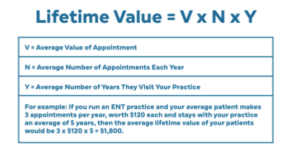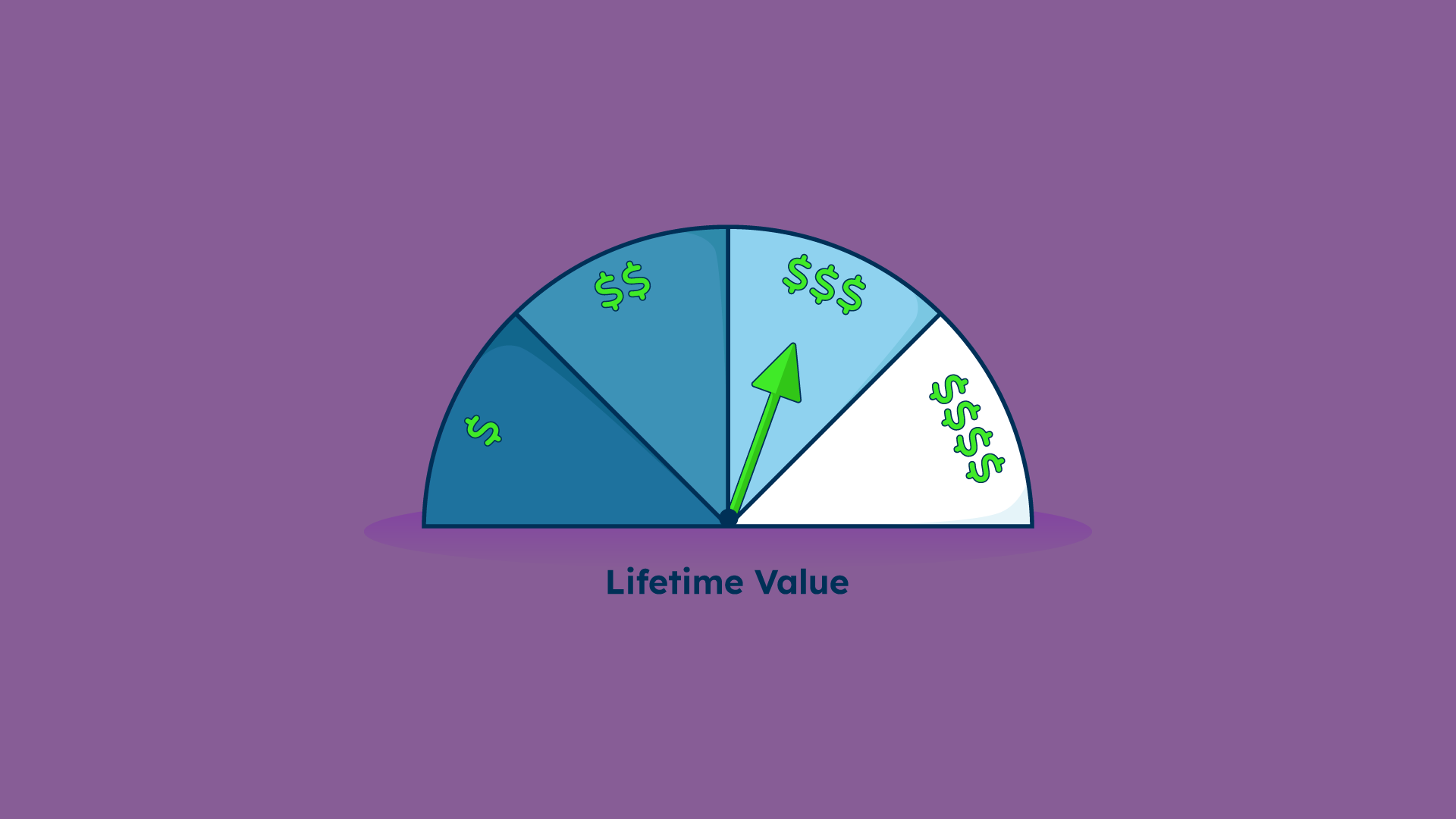Evaluating Patient Lifetime Value
Patient acquisition is key for any healthcare organization looking to grow its business, but this isn’t just about providing quality care and treatment. To grow in today’s digital age, you need to rank at the top of local search results, engage prospective patients with the right content, offer convenient access to information, and use patients’ feedback to keep your practice’s online reputation in superior shape.
 However, you can’t stop there. To build patient retention and drive return visits, it’s necessary to evaluate patient lifetime value and consider the potential revenue of all visits a patient makes while they are a customer of your practice.
However, you can’t stop there. To build patient retention and drive return visits, it’s necessary to evaluate patient lifetime value and consider the potential revenue of all visits a patient makes while they are a customer of your practice.
Think of managing a sports team — just as a team manager needs to know the strengths and weaknesses of each player, you need to understand the value of each patient in order to optimize costs. Imagine each patient as a player on your team. Just as some players may contribute more to the team’s success than others, some of your patients may be more valuable to your healthcare organization’s bottom line than others. When you evaluate patient lifetime value and develop targeted strategies to increase that value, you can build a winning team that achieves sustained success over time. So don’t let patient lifetime value be a mystery — evaluate it, optimize it, and use it to your advantage.
What Is Patient Lifetime Value and Why Is It Important?
Patient lifetime value is a calculation of the potential total revenue that could result from the ongoing care relationship with a given patient. To calculate it, you need three pieces of information:
- V = Average Value of Appointment,
- N = Average Number of Appointments Each Year, and
- Y = Average Number of Years Patients Visit Your Practice
To better illustrate how LTV works and how to calculate LTV, let’s take an example of an OB/GYN practice.
First, we need to consider how frequently a patient is likely to visit. According to data provided by Ipsos, 40 percent of U.S. women stated they visited or consulted an obstetrician or gynecologist once a year as of 2018.
Next, it’s necessary to establish the average revenue for a visit. Another study covering the cost of OB/GYN visits by state shows that prices range from $94 to $181, but for simplicity’s sake, we’ll estimate that each visit is worth $100.
Finally, let’s assume this patient is happy with the practice, receives regular communications, and finds the patient experience convenient. Therefore, they’re less likely to change providers and may stay with the practice for 10 years.
So, if this average patient makes 1 appointment per year, worth $100, and stays with a practice on average for 10 years, then the average patient lifetime value would be 1 x $100 x 7 = $700.
 Understanding patient lifetime value is crucial for any healthcare provider looking to secure their financial future and grow their practice. This metric shows you exactly how much a patient is worth to your practice over the course of their relationship with you.
Understanding patient lifetime value is crucial for any healthcare provider looking to secure their financial future and grow their practice. This metric shows you exactly how much a patient is worth to your practice over the course of their relationship with you.
However, knowing patient lifetime value is more than just a number. It’s a powerful tool that can help you optimize your marketing strategy, boost patient loyalty, and deliver a better patient experience overall. Once you understand which types of patients are most valuable to your practice, you can focus your efforts on patient acquisition strategies that target them. This means less wasted resources and more ROI for your practice.
Patient lifetime value also helps you evaluate the status of your bottom line. Your patients are the lifeblood of your practice, and knowing how much revenue they generate while under your care is essential for financial planning and forecasting.
Finally, leveraging patient lifetime value can help you deliver a better patient experience. By investing in your most valuable patients, you can boost patient loyalty and retention rates. In return, patients will be more willing to return for follow-up appointments and recommend your healthcare organization to others.
Marketing Growth Multiplier
In addition to patient acquisition cost and patient lifetime value, you can use another important metric when determining whether marketing efforts are providing a reasonable return on investment. To calculate the marketing growth multiplier, you divide the patient lifetime value by the cost of acquiring that patient. The resulting number tells you how many times the revenue generated by patients exceeds the cost of acquiring them. This way, you can gain valuable insights into the ROI of your marketing efforts and make data-driven decisions to improve patient acquisition and retention efforts.
For example, let’s say that the patient lifetime value in your practice is $10,000, and the cost of acquiring that patient is $2,000. In this case, the marketing growth multiplier would be 5x ($10,000 divided by $2,000). This means that for every $1 you spend on acquiring a patient, you’ll earn $5 in revenue from that patient over the course of their relationship with your practice.
 Overall, healthcare providers who want to optimize their marketing strategy and secure their financial future should strive to achieve a marketing growth multiplier of at least 3x. If the marketing growth multiplier is above 3x, it’s a good sign that your marketing efforts are generating a positive ROI. In this case, you should focus on maintaining patient care quality and continue refining your marketing strategy to ensure it’s as effective as possible.
Overall, healthcare providers who want to optimize their marketing strategy and secure their financial future should strive to achieve a marketing growth multiplier of at least 3x. If the marketing growth multiplier is above 3x, it’s a good sign that your marketing efforts are generating a positive ROI. In this case, you should focus on maintaining patient care quality and continue refining your marketing strategy to ensure it’s as effective as possible.
If the marketing growth multiplier is below 3x, it indicates that your practice isn’t seeing a reasonable ROI from your marketing efforts. This requires carefully reviewing your marketing strategy to determine what improvements can be made to increase the patient lifetime value or decrease the cost of acquiring them.
How to Increase Patient Lifetime Value
While calculating and using different metrics is essential, the foundation for strong patient retention begins with you and your staff. Are you offering patients convenience and relevant information? Are you responding to their feedback and delivering an exceptional patient experience? Let’s look at some strategies you can implement to build your patient retention and, in turn, patient lifetime value.
Communicate Proactively and in a Way That Patients Prefer
It’s impossible to optimize patient lifetime value if you only communicate on an “as-needed” basis or simply respond to prospective patient inquiries. Patients have greater trust in a provider when it’s clear that they have a genuine interest in their well-being and maintain regular interaction.
What’s the takeaway? Go beyond standard appointment reminders. Keep patients informed of upcoming appointments, test results, office closings, or changes in the protocol in a way that’s convenient for them. Send secure links to post-treatment care plans, impending screenings, and other preventative care information that is based on age, health history, and other factors.
Furthermore, communication is most effective when tailored to your audience and patients want clear, convenient communication with their healthcare providers in the method they prefer. This means asking them if they would like a phone call, email, or text. Something as simple as noting patient communication preferences can significantly improve their satisfaction.
Be Patient-Centric
Each person who visits your practice wants to be treated as an individual with important health concerns. When you prioritize patient-centric care, you are more likely to build strong, long-lasting relationships with patients. When they feel heard, respected, and valued, patients are more likely to return to you for future care, which can lead to increased patient loyalty and retention.
Imagine visiting a doctor who is dismissive of your concerns, rushes through the appointment, and prescribes medication without explaining the potential side effects. On the other hand, imagine visiting a doctor who takes time to listen to your concerns, explains the diagnosis and treatment options in plain language, and answers all of your questions. Which one would you choose for future care?
When patients feel heard, respected, and confident in the care they received, they are more likely to follow the recommended treatment plans, return for future care, and recommend the provider to others. If you put yourself in the patient’s shoes and tailor your approach to meet their unique needs and preferences, you build trust and a more positive patient experience, resulting in higher patient lifetime value.
Determine Patients’ Needs and Expectations
When you show a genuine interest in your patients, they feel more comfortable telling you about their experiences. With customized patient surveys, you can gather valuable feedback after each visit and identify any areas for improvement. It’s better to hear about any frustrations that can get in the way of the ideal experience as soon as possible.
An automated survey tool makes it simple to create and send surveys that generate real data to assess the trends in your healthcare organization. Regularly surveying patients and analyzing their feedback can help you stay in touch with patients’ needs and expectations, and make appropriate adjustments to improve the patient experience and increase patient loyalty.
Pay Attention to Your Patients’ Reviews
According to the latest online review statistics, nearly half of all consumers say they trust the reviews they read online as much as personal recommendations. Positive reviews help you build trust with potential patients and improve your overall reputation, while negative reviews can be an opportunity to address any issues and improve your services.
With automated review requests, you can make it even easier for your patients to leave you reviews. Within 24 hours of patients visiting your office, they receive a customized text or email that prompts them to give feedback. These reviews typically take a minute or less to complete, so you don’t have to worry about troubling anyone. In return, you can boost your online reputation, make improvements to patient retention, and help your business grow.
Use Demographic Insights
Looking at the patient lifetime value for different demographics can also assist you in discovering patients who are most beneficial for the lifetime health of your office. That way, you can develop marketing strategies to acquire new patients who are likely to bring in more revenue overall, instead of wasting your marketing dollars on attracting patients who are unlikely to have a high patient lifetime value.
With the right tools, you can filter feedback from diverse patient groups, individually, or in combinations that include age, gender, language preference, and other criteria. This data can provide insights into the unique needs and preferences of different patient groups, so you can tailor your services and strategies to meet their needs better and improve patient satisfaction even further.
Attract High-Value Patients
Predictive targeting is another way of using data-driven insights to adapt marketing strategies and optimize patient lifetime value. By analyzing patient data, including demographics, medical history, and behavior patterns, you can create targeted marketing campaigns that resonate with your audience and increase the likelihood of patients’ conversion.
Targeting high-value patients leads to more efficient use of marketing resources and a higher marketing growth multiplier in the long run. When you focus on patients with the highest potential for lifetime value, you can maximize the return on your marketing investment and improve the bottom line.
Build Stronger Relationships with Your Patients
To calculate patient lifetime value, you need to gather different data and use it to evaluate the total revenue that each patient will generate while being your patient. This can be a time-consuming and resource-intensive process, particularly for healthcare organizations that see a large number of patients. However, uncovering this key piece of data helps you gain valuable insights into your patients’ value and engagement, so you can make data-driven decisions that benefit both you and your patients.
To increase patient lifetime value and accelerate your practice’s growth, you need to maintain long-term relationships with your patients through ongoing engagement and communication while providing superior care. This is easier said than done, but with the help of SocialClimb’s platform, you can streamline the patient lifetime value evaluation process and get more accurate assessments. The platform can integrate with your Electronic Health Record (EHR) system to track patient data and appointment histories, as well as provide tools for tracking patient acquisition costs and overhead expenses.
In addition to this, you can use a range of other features — you can improve your online reputation and attract new patients with the online review management system, SocialClimb’s survey tools can help you collect data on patient satisfaction levels and identify areas for improvement, while predictive targeting and demographic insights can help you identify and target high-value patients.
Apart from saving time and resources, this way you can improve the accuracy of patient lifetime value evaluations, improve patient satisfaction and retention rates, and make informed decisions leading to a more secure financial future and practice growth.











